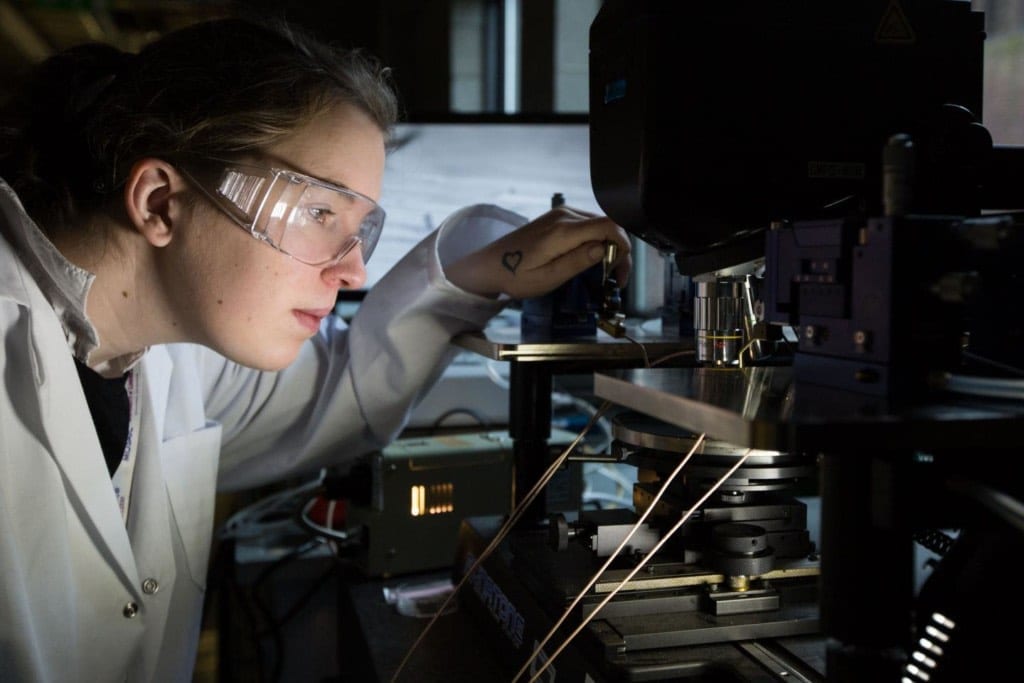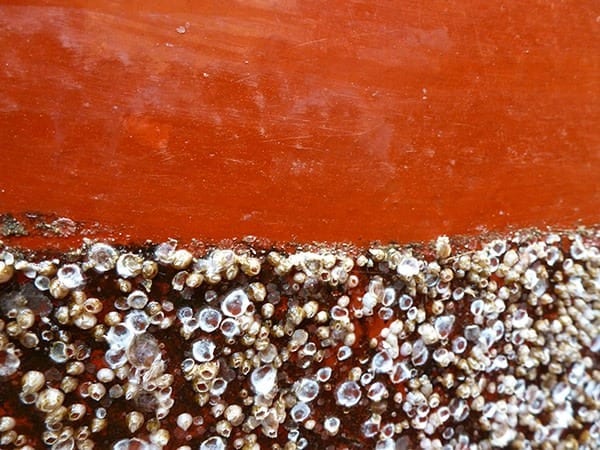
CREDIT: SEAN CURTIN TRUEMEDIA
Irish researchers squeeze low-cost electricity from sustainable biomaterial
Mobile phone speakers and motion detectors in cars and video games may soon be powered by electricity generated from low cost and sustainable biomaterials, according to research carried out at University of Limerick (UL), Ireland.
Scientists at UL’s Bernal Institute have discovered that the biomolecule glycine, when tapped or squeezed, can generate enough electricity to power electrical devices in an economically viable and environmentally sustainable way. The research was published on December 4, 2017 in leading international journal Nature Materials.
Glycine is the simplest amino acid. It occurs in practically all agro and forestry residues. It can be produced at less than one per cent of the cost of currently used piezoelectric materials.
Piezoelectric materials generate electricity in response to pressure, and vice versa. They are widely used in cars, phones, and remote controls for games consoles. Unlike glycine, these materials are normally synthetic and often contain toxic elements such as lead or lithium.
“It is really exciting that such a tiny molecule can generate so much electricity,” said lead author Sarah Guerin, a post-graduate student at the Department of Physics and the Bernal Institute, UL.
“We used computer models to predict the electrical response of a wide range of crystals and the glycine number was off the charts. We then grew long, narrow crystals of glycine in alcohol,” she added, “and we produced electricity just by tapping them.”
Sarah’s PhD supervisor Dr Damien Thompson, adds, “The predictive models we are developing can save years of trial-and-error lab work. The modelling data tells us what kinds of crystals to grow and where best to cut and press those crystals to generate electricity.”
Co-author and Science Foundation Ireland (SFI) Centre for Medical Devices (CURAM) investigator Professor Tofail Syed said: “We also have a pending patent that translates our findings to applications such as biodegradable power generation, devices detecting diseases inside of the body and physiologically controlled drug pumps”.
Previously, Bernal scientists discovered piezoelectricity in the globular protein lysozyme, found in tears, egg-white and saliva, and hydroxyapatite, a component of bone.
“The current finding extends the technology towards pragmatic, low-cost, renewable sources for electricity generation,” according to Professor Luuk van der Wielen, Director of the Bernal Institute and Bernal Professor of Biosystems Engineering and Design. “The finding translates the earlier Bernal scientists’ world-leading contribution in bio-piezoelectricity towards a large-scale and affordable application potential.”
Professor Edmond Magner, Dean of Science and Engineering at UL, said: “UL’s Department of Physics and Bernal Institute researchers continue to pioneer the use of biological crystals for electrical applications. This work places them at the forefront in the development of bio-piezoelectric devices”.
Learn more: Researchers generate electricity from low-cost biomaterial
The Latest on: Bio-piezoelectric devices
[google_news title=”” keyword=”bio-piezoelectric devices” num_posts=”10″ blurb_length=”0″ show_thumb=”left”]- New patent for bio-based polymer to be used in piezoelectric deviceson May 7, 2024 at 12:07 pm
UD engineers are the lead inventors on a new patent for making piezoelectric devices, such as sensors and actuators, using Nodax, a biodegradable, bio-based polymer. Every year, more ...
- Tethon 3D Launches Bison Bio, a New Bioprinteron May 7, 2024 at 8:19 am
Tethon 3D has released a bioprinter. The Omaha-based company primarily makes ceramic and polymer materials for resin 3D printing equipment, but has also branched into making machines themselves. Their ...
- It May be Possible to Power Implantable Generators with Our Bodieson May 3, 2024 at 7:30 am
Researchers are trying to solve the problem of powering implantable devices to help improve and save lives.
- The Role of Piezoelectric Materials in Medical Deviceson April 21, 2024 at 5:00 pm
Piezoelectric materials are used in various medical devices, including ultrasound imaging devices, drug delivery systems, and diagnostic sensors. In ultrasound imaging, piezoelectric crystals housed ...
- Hybrid energy harvesters that harness heat and vibration simultaneouslyon January 29, 2024 at 7:32 am
The thermoelectric effect, which converts thermal energy from both ends of the device into electrical energy, has a low energy conversion efficiency, and the piezoelectric effect, which converts ...
- Bright sparks in piezoelectric field lead R&Don April 7, 2022 at 10:45 pm
If you’ve ever used a gas match to light a barbecue, then you’ve used a piezoelectric device. When you squeeze a piezoelectric ceramic crystal it emits an electric current: in a gas match you ...
- piezo actuatoron July 7, 2021 at 4:59 pm
Unfortunately for those looking to experiment with this technology, the devices released so far have been prohibitively expensive. While they might not be able to compete with the latest Microsoft ...
- Ready For A World Of (AI-Powered) Superhuman Precision? It’s Comingon May 17, 2021 at 9:35 pm
Building on this promise, ultrafine precision isn’t the only benefit piezoelectric devices portend for the medical field. Piezoelectric motors can be manufactured from completely nonmagnetic ...
- Piezoelectric Actuators Informationon August 19, 2020 at 12:45 am
Piezoelectric actuators are devices that produce a small displacement with a high force capability when voltage is applied. There are many applications where a piezoelectric actuator may be used, such ...
- Piezoelectric Sensors Informationon February 19, 2018 at 3:40 am
Piezoelectric sensors measure the electrical potential caused by applying mechanical force to a piezoelectric material. Piezoelectric sensors are used in a variety of pressure-sensing applications. A ...
via Google News and Bing News









